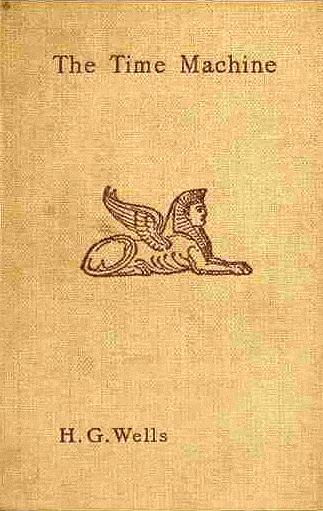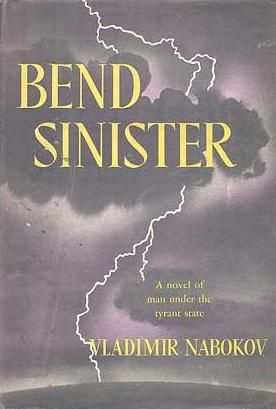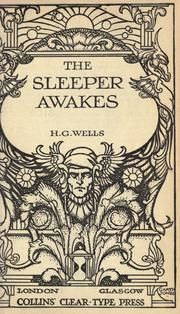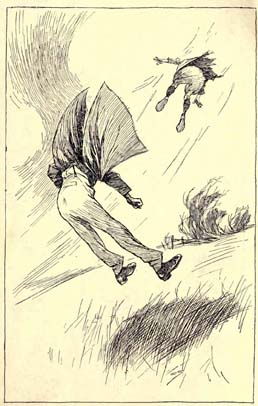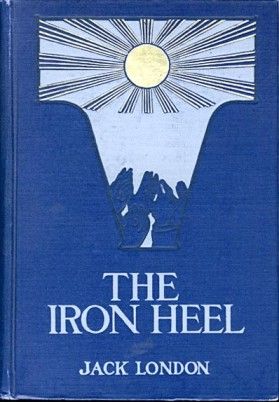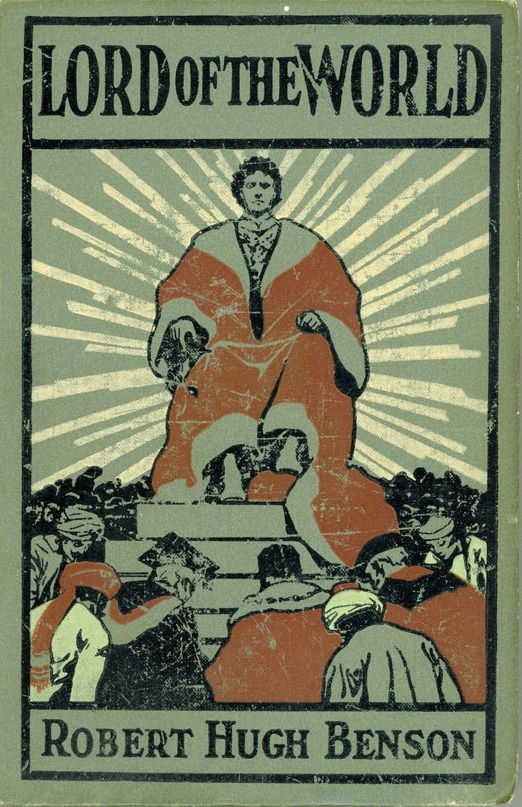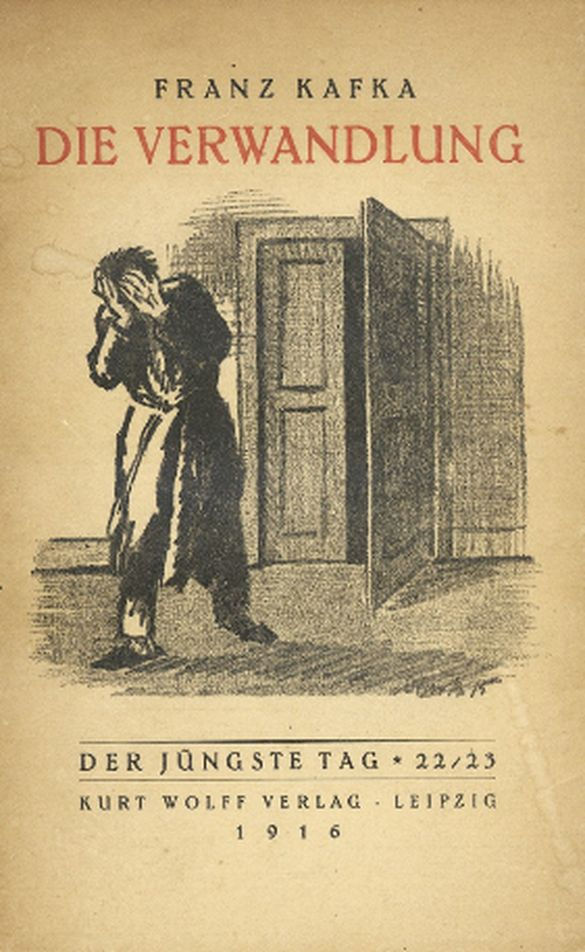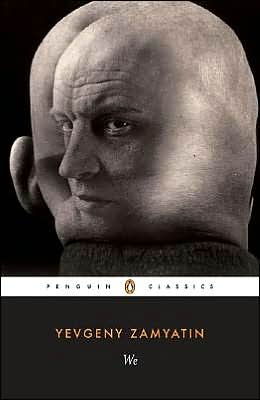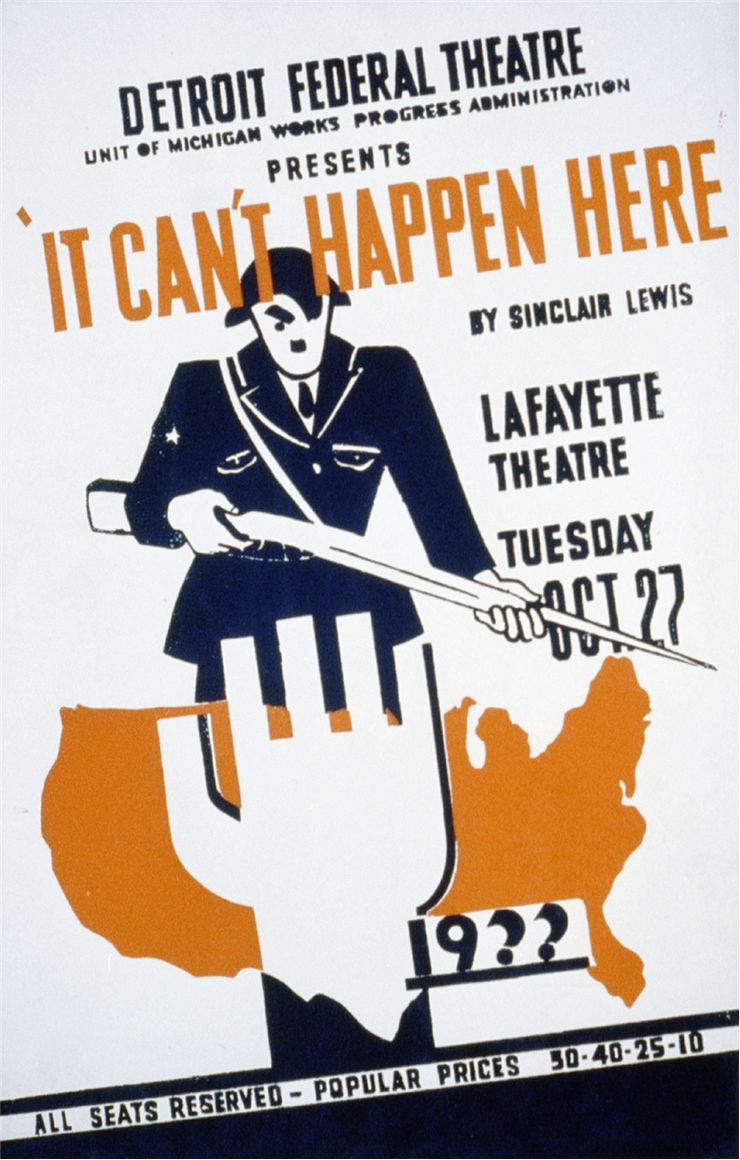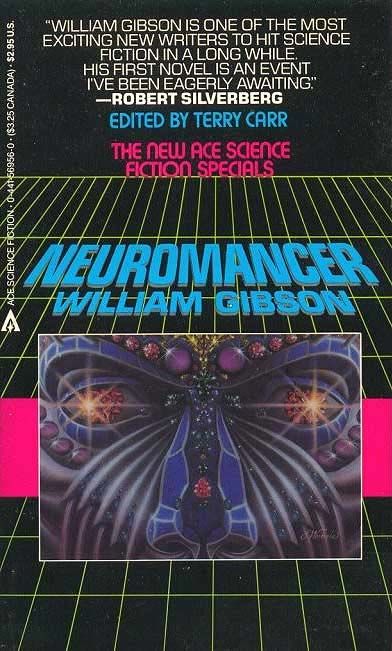List of Dystopian Literature - Dystopian Novels
"A Sojourn in the City of Amalgamation, in the Year of Our Lord, 19--" (1835) is a dystopian novel written by the American author Jerome B. Holgate. By describing dystopian way of life in fictional city of Amalgamation, the writer tried to discredit abolitionists and supporters of interracial marriage between different ethnicities or races (in his case it was Caucasian Americans and African American slaves).
"The Republic of the Future" (1887) is an 88 page long novella by the American writer Anna Bowman Dodd. Written as a response to the many other dystopian themed novels of her time, she described a utopian society of futuristic "New York Socialist City". Although at first, lifestyle in it looked to be better than in the rest of the capitalist world, she soon revealed that its citizens live a life totally controlled by the government.
"Caesar's Column" (1890) by Ignatius L. Donnelly represents one of the first major dystopian novels in the English language. Often described as "apocalyptic dystopia", its story follows the life of simple man from Uganda who comes to visit the futuristic metropolis of New York City. There he witnesses its great wealth, but also the pain of the labor class. Eventually, he escapes the city after the beginning of the open war between workers and aristocrats.
"The Time Machine" (1895) is science fiction novella by H. G. Wells, which follows the life of a time traveler who goes to the year 802,701 A.D. There he witnesses the utopian society of Eloi, a race of human descendant that live their life in peaceful in open nature. However, he soon found out that Eloi (former aristocrats) were bread to live only to be food for the disfigured cave dwelling monsters Morlocks (former working class). This book was one of the first in the science fiction "Dying Earth" subgenre.
"When The Sleeper Wakes" (1899) is a dystopian novel written by H. G. Wells. It tells the story of a man who wakes up after the 203-year long sleep. Surrounded by the seemingly utopian environment, he soon found out that the truth is far from that when all of his horrors and fears manifested.
"The First Men in the Moon" (1901) is science fiction novel by H. G. Wells. It tells the story of two protagonists and their journey to moon. There they found the underground society called "Selene", and after a brief imprisonment, one of the protagonists managed to return to Earth.
"The Iron Heel" (1908) is a dystopian novel written by American writer Jack London. Its story chronicles the rise of the oligarchic tyranny in the alternate history United States.
"Lord of the World" (1908) is a dystopian novel written by English writer Robert Hugh Benson. It describes the futuristic world in which every country in the world has merged into one. Lack of religion and growing acceptance of hopelessness and euthanasia eventually brought the rise of the anti-Christ movement in its ruling government.
"The Machine Stops" (1909) is an award-winning short science fiction story written by the English writer E. M. Forster. It depicts the world, in which human population has lost the ability to live on the surface on the Earth, and the two protagonists who discuss the possibility of life beyond their underground environments and automated machines that provide them life.
"Metamorphosis" (1915) is the novella written byinfluential German novelist Franz Kafka. Widely studied by the colleges and universitiesacross the entire world, this novel describes the life of a traveling salesman who slowly becomes transformed into monstrous insect-like creature.
"We" (1921) is a dystopian novel by the Russian authorYevgenyZamyatin. Written as a response to the authors experience in Russian revolutions of 1805 and 1917, this novel tells the tale of the futuristic prison society called "One State". There entire population of this "urban city made of glass" is constantly monitored by the totalitarian government.
"Brave New World" (1932) is a very popular dystopian science fiction novel by Aldous Huxley. It depicts the life in the futuristic city of London where advanced human reproduction and new sleep-learning techniques has managed to create dystopian society.
"It Can't Happen Here" (1935) is American political novel by Sinclair Lewis. This semi-satirical story depicts the rise of one politician, who managed to win the election and create a society that is governed by his loyal political militia. The main character realizes too late what is happening and starts his struggle against this fascists regime.
"War with the Newts" (1936) is a satirical science fiction story by Czech writer Karel Čapek. It describes enslavement of the sentient species of newts by the hands of human race, and their subsequent rebellion and start of the global war.
"Anthem" (1938) by Ayn Rand is a dystopian novel that tells the story of a futuristic world in which human race has entered another dark age. There, aspects of collectivism, socialistic thinking and economics are eliminated, and surviving population lives in the environment where the concept of individuality is forbidden (use of the word "I" is punishable by death).
"Darkness at Noon" (1940) is a novel by the Hungarian-born British novelist Arthur Koestler Arthur Koestler. It describes the life of the Russian who was outcasted and imprisoned after October Revolutionary, and the author's disillusionment with Communism.
"If This Goes On-" (1940) is a short science fiction story by Robert A. Heinlein, that describes the futuristic state of USA that is governed by the theocracy. He used aspects of mass communication, applied physiology and hysterical populace to explore their influences on Christianity.
"Kallocain" (1940) is Swedish dystopian novel by Karin Boye. It tells the story of the futuristic totalitarian state that rules over its people by the use of hallucinogenic truth drug. Author focused its story on the aspects of totalitarian state, the meaning of life, and the power of love.
"That Hideous Strength" (1945) is science fiction novel by C.S. Lewis. This third part of "Space Trilogy", describes the adventure of Dr. Ransom who finds himself in a futuristic dystopian Earth society, filled with superior alien beings and uncontrolled scientific experiments. Author focused this work on the aspects of ethics and morality.
"Bend Sinister" (1947) is dystopian novel written by Russian writer Vladimir Nabokov. It is set in the fictional European nation known as "Padukgrad", in which government is discouraging the idea of individuality. The main story revolves around the relationship between civilized Professor Adam Krug and evil government a dictator who seeks Krug's support to validate the new regime.
"Ape and Essence" (1948) is a dystopian novel by Aldous Huxley. Similarly as his previous work "Brave New World", this novel tells the tale of the pessimistic dystopian future, where the existence of human race is threatened by the constant presence of large-scale warfare and state of mutually assured destruction.
"Nineteen Eighty-Four" (1949) is a dystopian novel by George Orwell. It tells the story of a futuristic society which is in the state of permanent war. Ruled by the oligarchical dictatorship, citizens of that world are kept put under surveillance and mind control. The main protagonist is member of the ruling party that slowly realizes that he must rebel against his masters.
"Player Piano" (aka Utopia 14) (1952) is a first novel from the American writer Kurt Vonnegut. Set in a futuristic world that is almost completely mechanized, his dystopian tale describes the influence of automation and capitalism on the life of people in it.
"Fahrenheit 451" (1953) is one of the best-known novels by American writer Ray Bradbury. Set in a dystopian society that tightly controls the flow of information between its citizens. Main protagonist is a fireman(or often called "bookburner")that is tasked to destroy all books that are deemed banned by the ruling government.
"One" (aka Escape to Nowhere) (1953) is a dystopian novel by David Karp. It is set in the dystopian totalitarian state that has managed to shape its citizens to root away any dissension. They did that using the methods of surveillance, re-education, and brainwashing.
"Bring the Jubilee" (1953) is an alternate history novel by Ward Moore. It tells the story of the alternate mid-20th century the United States, in which Confederate The States of America won the Battle of Gettysburg and the entire "War of Southron Independence". Faced with the impending war between the Confederacy and the German Union, the main protagonist decides to travel back in time to witness the Battle of Gettysburg firsthand.
"Love Among the Ruins" (1953) is a short story by Evelyn Waugh. It tells the story of the dystopian state in which main character works in the state-sanctioned euthanasia center that is used not only by terminally ill but also with healthy citizens.
"Lord of the Flies" (1954) is the bestselling novel by Nobel Prize-winning author William Golding. It describes the controversial events that happened when group of deserted boys start fighting for survival on a distant island. Masterfully explored aspects of human nature, common good and individual warfare earned this book much attention from the readers across the world.
"The Chrysalids" (1955) is the best-known novel from the English science fiction writer John Wyndham. Story follows the group of people that survived natural disaster,that few thousand years in the future decimated human population. In their everyday lives, they are faced with the fear of genetic mutations and dangerous knowledge from the past times (writing is forbidden).
"Facial Justice" (1960) is a dystopian novel by L. P. Hartley. It describes the futuristic post-apocalyptic society that has the goal to banish privilege, envy and hate. To ensure that, they enabled people who hate the look of their faces a process of easy surgical alteration to a state of being not too beautiful or too ugly.
"Harrison Bergeron" (1961) is a short story by Kurt Vonnegut that describes the life in the futuristic dystopian version of United States where all men are truly "equal". Special government agents called "Handicappers" enforce equal intelligence, physical and athletic looks, and lack of competition.
"A Clockwork Orange" (1962) is a dystopian novella written by the English author Anthony Burgess. Often selected as one of the best novels of the 20th century, Clockwork Orange tells the tale of the dark dystopian nightmare future filled with violent gangs. It brilliantly tackles the aspects of good and evil, social pathology, meaning of human freedom and social reform.
"Nova Express" (1964) by William S. Burroughs is satire novel that describes the dystopian world in which police force tries to exterminate various forms of ever-growing crime. Book focuses greatly on the aspects of control, crime and addiction.
"The Penultimate Truth" (1964) is a science fiction novel from a famous American writer Philip K. Dick that is set in the dark dystopian world in which most of the humanity lives in the underground shelters. Unaware that the World War II has been finished long time ago, people continue to live in a lie, surrounded with paranoia and political oppression.
"Make Room!Make Room!" (1966) is a science fiction novel by American writer Harry Harrison. It describes dystopian world that is overrun by the never-ending unchecked growth of society, lack of resources, human wasteland inefficient infrastructure. (In this novel author postulated that 7 billion people are a start point of dystopian environment, a number that we know will be reached before the year 2015.)
"Stand on Zanzibar" (1968) by John Brunner is a novel that describes the lives of several protagonists in the dystopian environment of the overcrowded 21st century Earth. Surrounded with over 7 billion people, people of this world must live alongside many consequences of overpopulation.
"The Jagged Orbit" (1969) is a science fiction novel by John Brunner that describes events in the futuristic dystopian United States of America. Author's main storyline revolves around interracial tensions, gang crimes, drugs, and violence.
"This Perfect Day" (1970) is the science fiction novel by Ira Levin, which is often compared to the other dystopian hits "Nineteen Eighty-Four" and "Brave New World". The story describes the dystopian world in which central computer called UniComp reigns over humanity. Regular injections have made entire population obedient and happy, never knowing of their unfulfilled potential and freedom.
"The Lathe of Heaven" (1971) by Ursula K. Le Guin is a science fiction dystopian novel that follows the life of a man who can make his dreams come true. Helped by the psychologistDr. Haber, two of them start the impossible quest of creating the better society for entire humankind.
"The Sheep Look Up" (1972) is a post-apocalyptic science fiction novel by John Brunner, which is set in the world almost destroyed by the pollution gasses. Its storyline follows the adventures of Environmentalist Austin Train who wants to save the world from the poison that has affected the health and mortality rates of every living being on Earth.
"Flow My Tears, the Policeman Said" (1974) is science fiction novel by American writer Philip K. Dick. Set in the dystopian totalitarian version of future United States, this award-winning tale follows the life of popular pop singer who overnight loses his identity overnight.
"The Shockwave Rider" (1975) is a silence fiction novel written by the English writer John Brunner. It tells the story of a protagonist who uses his computer hacking skills to escape capturing from the forces of the all-knowing government. Set in a world that is ruled by information control, multi-billion corporations and spying governments, this novel paved the way for the incoming wave of cyberpunk revolution.
"High-Rise" (1975) is a science fiction novel by JG Ballard that describes the violent events in one luxury high-rise building. After being provided with all their need, tenants of this building started reversing their social status to the point when they become violent mob hell-bent on destruction of the "enemy floors". This dark tale vividly explored the concepts of primal urges, laws of the jungle, mob psychology and life in the urban environment.
"Alongside Night" (1979) is a dystopian novel writer by the English writer J. Neil Schulman. It describes the possible future in which economic collapse destroyed the society of the United States, with the focus being set on the exploring the concepts of freedom, black-market and hope.
"The Running Man" (1982) is a science fiction novel written by the award-winning writer Stephen King. Set in the futuristic dystopian world full of violence, this gripping story tells the tale of the Ben Richards - contestant in the popular TV show in which contestants are released in the destroyed outskirts of the walled cities, where they must fight to the death for a chance to win the prize.
"Neuromancer" (1984) is an award-winning cyberpunk novel written by the American writer William Gibson, and is a first part of Sprawl trilogy, together with Count Zero (1986), and Mona Lisa Overdrive (1988). Celebrated as the starting point of Cyberpunk subgenre of science fiction, this revolutionary trilogy explored the concepts of artificial intelligences, the connection between humans and machines, information control, shared consciousness, life in the dystopian environments and cyberspace.
"The Handmaid's Tale" (1985) is an award-winning dystopian science fiction novel by Margaret Atwood. It tells the story of futuristic totalitarian mono theocratic state built on the ashes of the former United States, where women are treated much worse than in any time of modern history.
"Obernewtyn Chronicles" (1987-2008) is a series of science fiction novels by IsobelleCarmody. Set in the post-apocalyptic dystopian world, it follows the young psionic female protagonist who is on the run from the ruling religious authority. Novels greatly explore the themes of prejudice, discrimination, tolerance, responsibility, duty and human and animal rights.
"The Domination" (1988) is an alternate history novel trilogy by S. M. Stirling. They depict the history of the dystopian future filled with war. The main conflict revolves around Domination of the Draka's intention to conquer entire world (a society that rose in Africa after the loss of Loyalists in the American Revolution).
"Fatherland" (1992) is an alternative history novel created by English writer Robert Harris. Set in the Europe 20 years after the Germany's victory in World War 2, this dark imaging of empire of Third Reich tells the tale of the lone investigator who discovers a secret that could change the entire future of this dystopian society.
"The Children of Men" (1992) is the dystopian novel made by the English writer P.D. James. It tells the tale of the near future England, where the sudden illness caused the creation of almost absolute infertility. In that environment, main protagonist Theo Faron embarks on a mission to transport the only pregnant woman from to the urban war zone areas of England to scientific facility that could provide cure and salvation to the humankind.
"The Giver" (1993) is a science fiction novel byAmerican author of children's literature Lois Lowry. His tale, set in a seemingly utopian future society, describes the life of the protagonist Jonas, who becomes selected to be the only human to receive full range of human emotions and knowledge of past times.
"Gun, with Occasional Music" (1994) is an American science fiction novel written by Jonathan Lethem. This hardboiled detective tale describes the adventures of wisecracking private the detective in the dystopian world filled with sentient evolved animals and society that is dependent on mind numbing drugs.
"The Diamond Age, or A Young Lady's Illustrated Primer" (1995) is a post-cyberpunk novel written by American author Neal Stephenson. This dystopian tale follows the life of girl named Nell in a society that is ruled by nanotechnology. The author explored the themes of education, social class, ethnicity, and the nature of artificial intelligence.
"Battle Royale" (1999) is the acclaimed dystopian novel written by the Japanese author KoushunTakami. It follows the similar storyline as William Golding's "Lord of the Flies" by following the lives of the group of students, who under the guise of "study trip" became transported on an isolated island where they receive ultimatum -only one surviving member of the group can return to the civilization. This controversial study of senseless youth violence and human nature quickly became of the biggest Japanese bestsellers of all time.
"Noughts and Crosses" (2001) is a series of novels written by the English author Malorie Blackman. These five novels depict the life of several protagonists that live in the racist dystopian society, with the focus, placed on the themes of racial prejudice, segregation, slavery and distrust.
"Oryx and Crake" (2003) is the post-apocalyptic science fiction novel written by the Canadian author Margaret Atwood. It descripts the live of the possibly last surviving human in the dystopian future that was devastated by a deadly virus.
"Manna" (2003) is a science fiction novel by Marshall Brain that is focused on themes of information technology, transhumanism, robotic revolution and their possible use in creation of both utopias and dystopia.
"The Bar Code Tattoo" (2004) is the science fiction novel by Suzanne Weyn. This young adult story focuses on the life of 17-year-old girl Kayla Reed who opts out from receiving identity bar-code tattoo that regulates many aspects of life in her society. This dystopian tale explores the concepts of identity, Individuality, control and freedom.
"Never Let Me Go" (2005) is a dystopian science fiction novel by Kazuo Ishiguro. It follows life of female protagonist called Kathy, who remembers her youth and times when she was growing up under the influence of dystopian society.
"Uglies" (2005) is a science fiction novel by Scott Westerfeld that explores the themes of youth, independence and emotional and physical change. Main the protagonist of this dystopian tale is young teenager Tally, who refuses to conform to the society rule that states that everyone must be turned pretty by the process of extreme cosmetic surgery.
"Armageddon's Children" (2006) is a fantasy novel written by the English author Terry Brooks. Set between events of the Brooks' previous series "Word/Void" trilogy and "Shannara" series, this book describes the events in the post-apocalyptic world that is ravaged by war.
"Bar Code Rebellion" (2006) is a science fiction novel by Suzanne Weyn, and a sequel to her 2004 book "The Bar Code Tattoo". The teenage heroKayla continues her fight against the government who enforces the use of mind-altering barcode tattoos on citizens. As with the first part, this book continues to explore the themes of identity and freedom.
"The Book of Dave" (2006) is a dystopian novel written by English author Will Self. It tells the story of the mentally ill London taxi driver, whose diary book containing various frustrations toward women, family, and society become the foundation of the dystopian dogmatic, cruel, and misogynistic religion two centuries after the catastrophic flood that almost destroyed modern England.
"The Hunger Games" (2008) is a science fiction novel written by the American author Suzanne Collins. It tells the tale of the futuristic dystopian state located on the the territory of today's the United States, and its popular television program called "The Hunger Games " in which one boy and one girl fight to the death.
"The Forest of Hands and Teeth" (2009) is the post -apocalyptic dystopian novel written by Carrie Ryan. It describes the life of few human survivors in a barricaded village that is surrounded by the endless horde of zombies. The author explored the themes of violence, secrecy and repression.
"Fahrenheit 56K" (2009) is a dystopian play written by Fernando de QuerolAlcaraz. It depicts the life of oppressed citizens that live under the rule of oligarchical dictatorship. The author masterfully tackled the issues of censorship, freedom of speech, democracy, faith, religious freedom, dissent and debate.
"The Maze Runner" (2009) is a young young-adult science fiction series by James Dashner. It tells the tale of young protagonist, who wakes up in the strange maze only remembering his name. Surrounded with other children, he must find the way out from this dark dystopian environment.
"The Year of the Flood" (2009) is the post-apocalyptic science fiction novel written by the Canadian author Margaret Atwood. As a sequel to her 2003 novel "Oryx and Crake", it continues to tell the tale of human survivors in the world decimated by a deadly virus, with the introduction of new themes - xenotransplantation, genetic engineering and exploration of technologies influence on our lives.
"Shades of Grey" (2009) is a dystopian novel written by the English author Jasper Fforde. It describes the dystopian world in which persons social class is determined by his ability to perceive color.
"Catching Fire" (2009) by Suzanne Collins, is a sequel to her 2008 dystopian novel "The Hunger Games". It continues the story of protagonist KatnissEverdeen and her struggle against the society ruled by the totalitarian dictator. During the course of the novel, Katniss is forced to return to the fighting arena of the country's most popular TV show.
"The Envy Chronicles" (2010) is a post-apocalyptic series of novels written by Joss Ware. It tells the tale of several time travelers who ended up in the futuristic Earth, that was decimated by the violent earthquakes, raging storms, towering tsunamis, and other natural disasters.
"Hollowland" (2010) is a first in a series of young adult dystopian novels by Amanda Hocking. It tells the tale of lonely girl Remy King, who travels across the land of destroyed United America in the constant fight against violent gangs, creatures and zombies.
"Super Sad True Love Story" (2010) is the award winning science fiction dystopian novel written by the American authorGary Shteyngart. It describes the life in the near future, where society is ruled by the influences of media, retail and mass-market economy.
"Tobacco-Stained Mountain Goat" (2011) is science fiction novel written by the Australian authorAndrez Bergen. This dystopian noir tale depicts the life of the protagonist that is surrounded with oppressive corporations, distrust and fascist security police force.
"Wither" (2011) is a science fiction novel written by the Lauren DeStefano, and a first in the planned trilogy called "The Chemical Garden". It describes the life in the futuristic dystopian society, which has managed to create the perfect generation of humans. However, same discovery gave birth to the deadly virus that started killing the kids born by those perfect humans.
